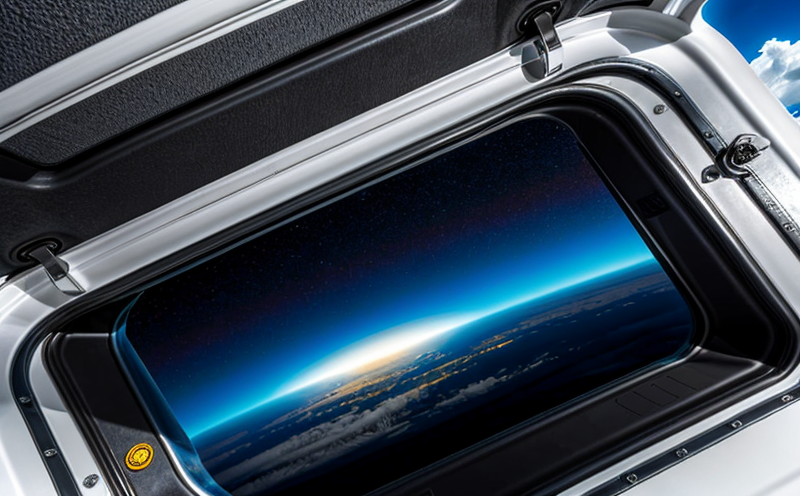Evaluating the impact of ozone on aerospace vehicle seals and gaskets
The Critical Importance of Evaluating the Impact of Ozone on Aerospace Vehicle Seals and Gaskets
In the world of aerospace engineering, ensuring the reliability and longevity of critical components is paramount to maintaining the safety and performance of aircraft and spacecraft. One often-overlooked factor that can have a significant impact on these critical components is ozone (O3) exposure. Prolonged exposure to ozone can lead to damage and degradation of seals and gaskets used in aerospace vehicles, compromising their integrity and potentially leading to catastrophic failures.
At Eurolab, we specialize in providing a crucial laboratory service Evaluating the Impact of Ozone on Aerospace Vehicle Seals and Gaskets. This comprehensive evaluation helps businesses assess the vulnerability of their critical components to ozone-induced degradation, enabling them to make informed decisions about materials selection, testing protocols, and maintenance schedules.
What is Evaluating the Impact of Ozone on Aerospace Vehicle Seals and Gaskets?
Evaluating the impact of ozone on aerospace vehicle seals and gaskets involves exposing samples of these materials to controlled levels of ozone in a laboratory setting. The objective is to simulate real-world exposure conditions and measure the effects of ozone degradation on the materials performance, including its tensile strength, elasticity, and durability.
This evaluation is essential for several reasons
Material selection Aerospace engineers need to choose materials that can withstand the harsh environment encountered by aircraft and spacecraft. Evaluating the impact of ozone helps identify suitable materials for critical components.
Design optimization By understanding how ozone affects seals and gaskets, designers can optimize component design to mitigate degradation risks.
Testing and validation This evaluation enables developers to validate testing protocols and ensure that their products meet or exceed performance standards.
Key Benefits of Evaluating the Impact of Ozone on Aerospace Vehicle Seals and Gaskets
Our laboratory service offers numerous advantages for businesses in the aerospace industry
Improved safety By understanding how ozone affects seals and gaskets, engineers can design components that minimize risks to people, aircraft, and spacecraft.
Enhanced reliability Evaluating the impact of ozone helps identify potential failure points, enabling manufacturers to develop robust maintenance schedules and reduce downtime.
Cost savings Identifying suitable materials and optimizing component design can lead to reduced material waste, lower production costs, and increased efficiency.
Compliance with regulations Our evaluation ensures that your products meet or exceed relevant industry standards, reducing the risk of regulatory non-compliance.
Competitive advantage By leveraging our expertise and data, you can differentiate your products in the market and establish a reputation for excellence.
Benefits for Aerospace Manufacturers
For aerospace manufacturers, Evaluating the Impact of Ozone on Aerospace Vehicle Seals and Gaskets is crucial for several reasons
Reduced maintenance costs By identifying potential failure points, manufacturers can develop targeted maintenance schedules, reducing costly repairs and replacements.
Increased product lifespan Understanding how ozone affects seals and gaskets enables engineers to design components that last longer, reducing waste and the need for frequent replacements.
Improved supply chain management Our evaluation helps suppliers select suitable materials, streamlining procurement processes and reducing lead times.
Benefits for Aerospace Engineers
For aerospace engineers, our laboratory service provides a valuable tool for optimizing component design
Enhanced performance By understanding how ozone affects seals and gaskets, engineers can develop components that perform consistently under various environmental conditions.
Improved safety margins Our evaluation helps identify potential failure points, enabling engineers to incorporate robust safety features into their designs.
QA Section
We understand you may have questions about our laboratory service. Here are some answers
Q What is the process for evaluating the impact of ozone on aerospace vehicle seals and gaskets?
A Our team will work with you to prepare samples, simulate ozone exposure conditions, and analyze results using specialized equipment.
Q How long does the evaluation take?
A The duration varies depending on sample preparation, testing protocols, and analysis requirements. We strive to complete evaluations within 2-4 weeks.
Q What types of materials can be evaluated?
A Our laboratory is equipped to evaluate a wide range of materials commonly used in aerospace applications, including elastomers, plastics, and composites.
Q How do I get started with Evaluating the Impact of Ozone on Aerospace Vehicle Seals and Gaskets?
A Contact us through our website or by submitting an inquiry form. Our team will guide you through the evaluation process and provide a customized quote for your project.
In conclusion, Evaluating the impact of ozone on aerospace vehicle seals and gaskets is a critical laboratory service that helps businesses in the aerospace industry ensure the reliability and safety of their products. By leveraging our expertise at Eurolab, you can make informed decisions about material selection, testing protocols, and maintenance schedules, ultimately reducing costs and improving performance.




